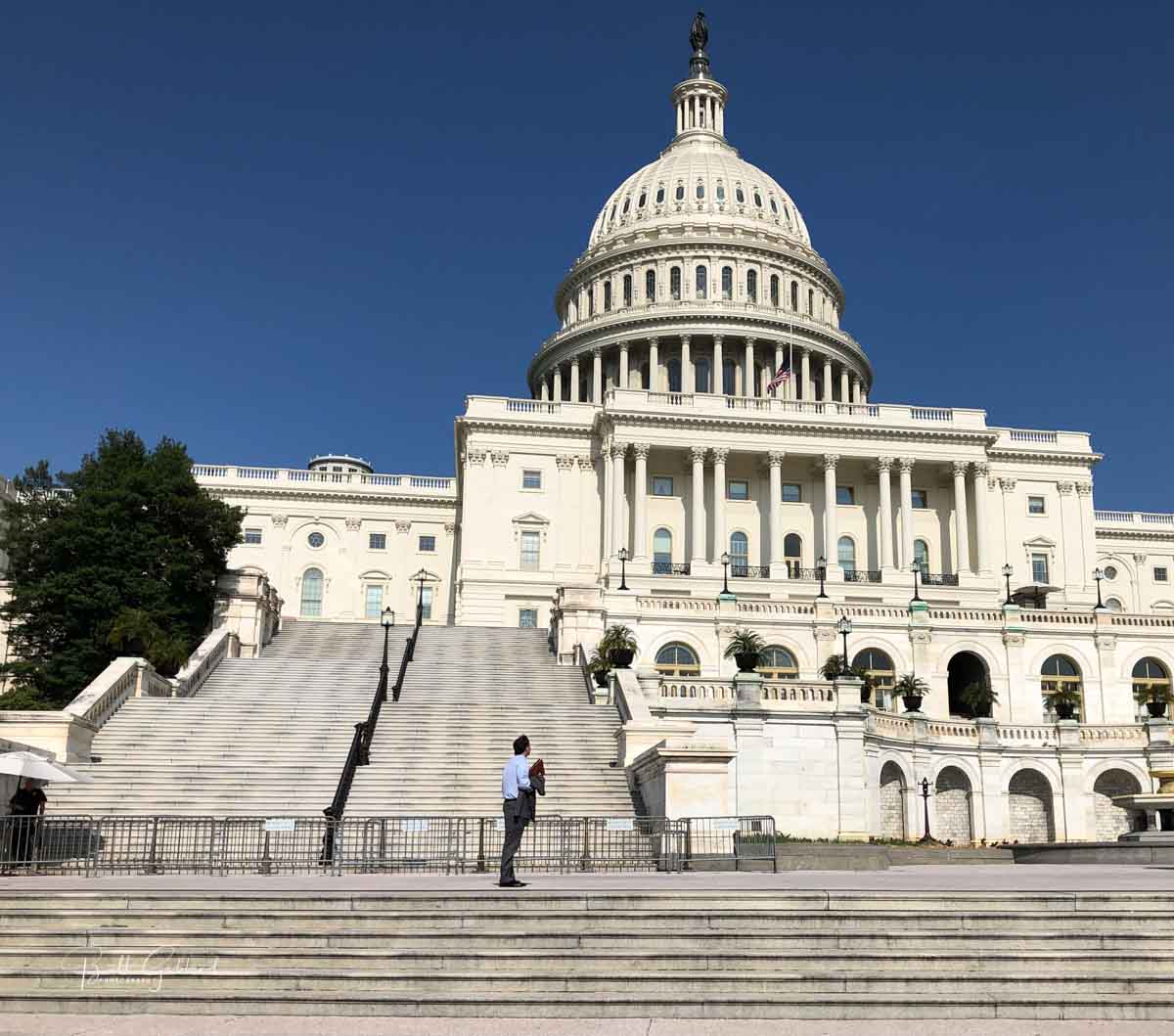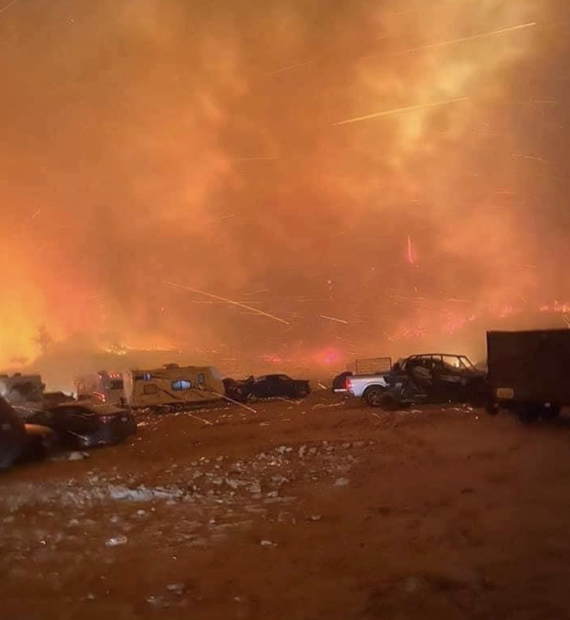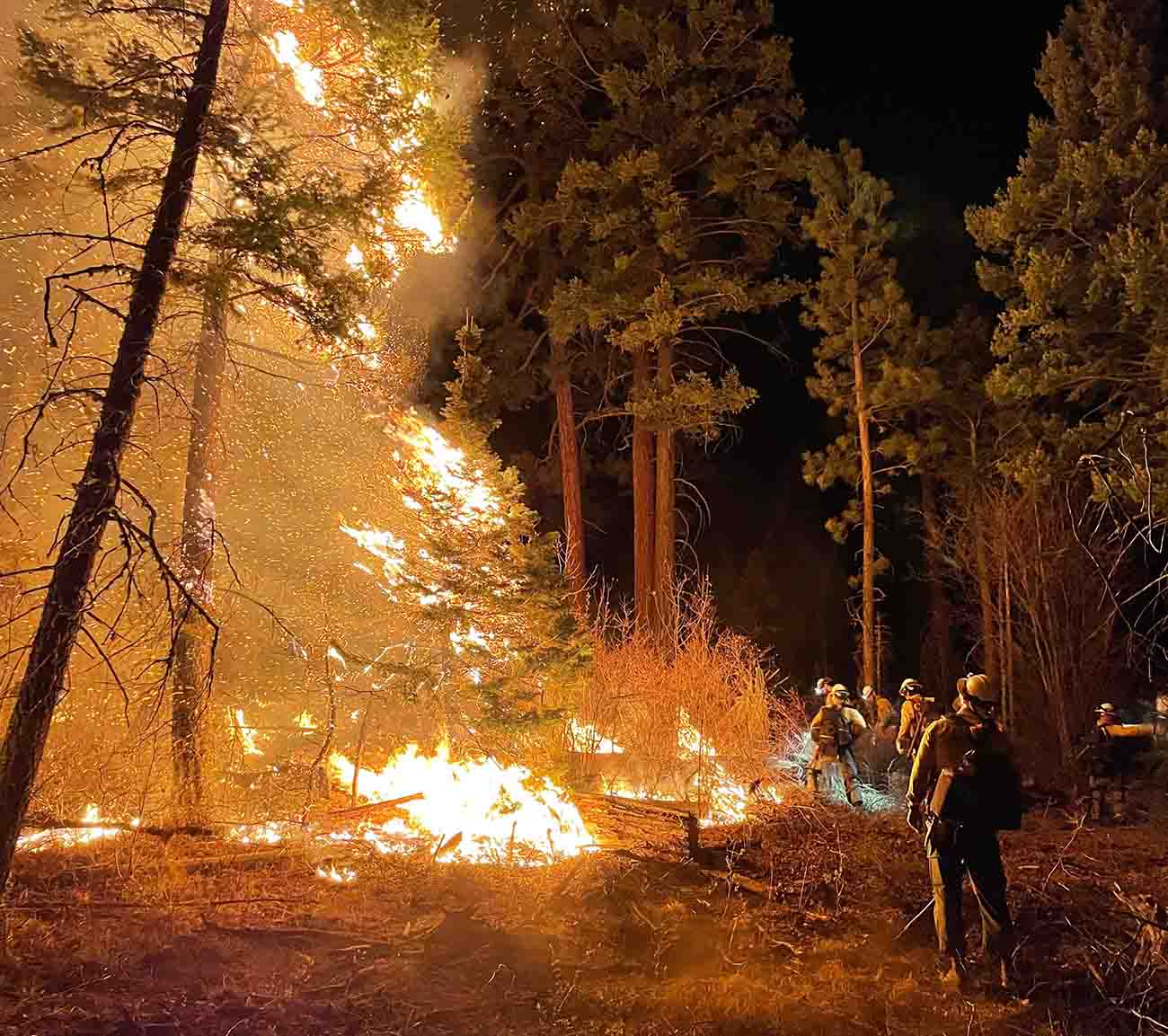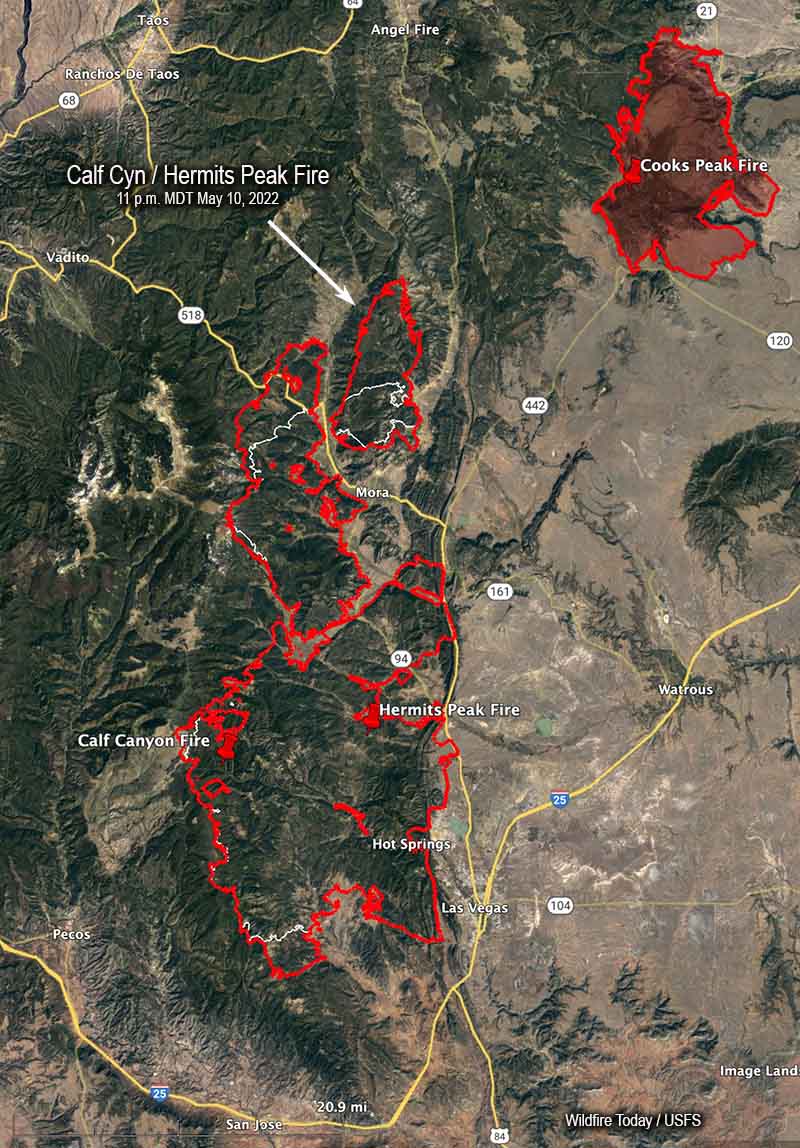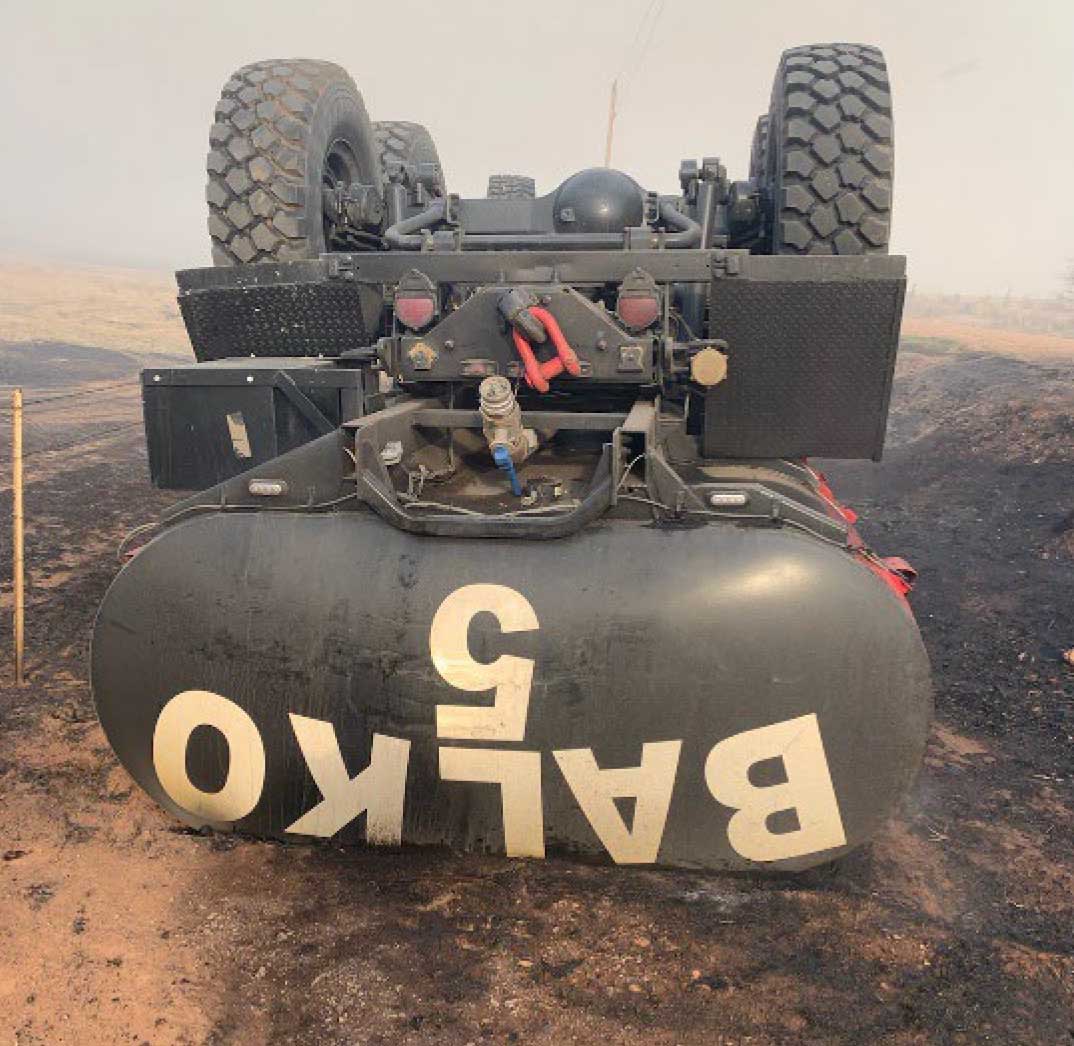Updated at 1:57 p.m. PDT May 12, 2022
At briefing Thursday morning at 8:30 fire officials said one firefighter working on the Coastal Fire in Orange County, California was injured and transported to a hospital. The evacuation orders are still in place, affecting about 900 homes. The Orange County Sheriff’s office has current information about evacuations.
The estimate of homes destroyed is still at least 20, said Orange County Fire Authority Chief Brian Fennessy. The fire has burned 199 acres.
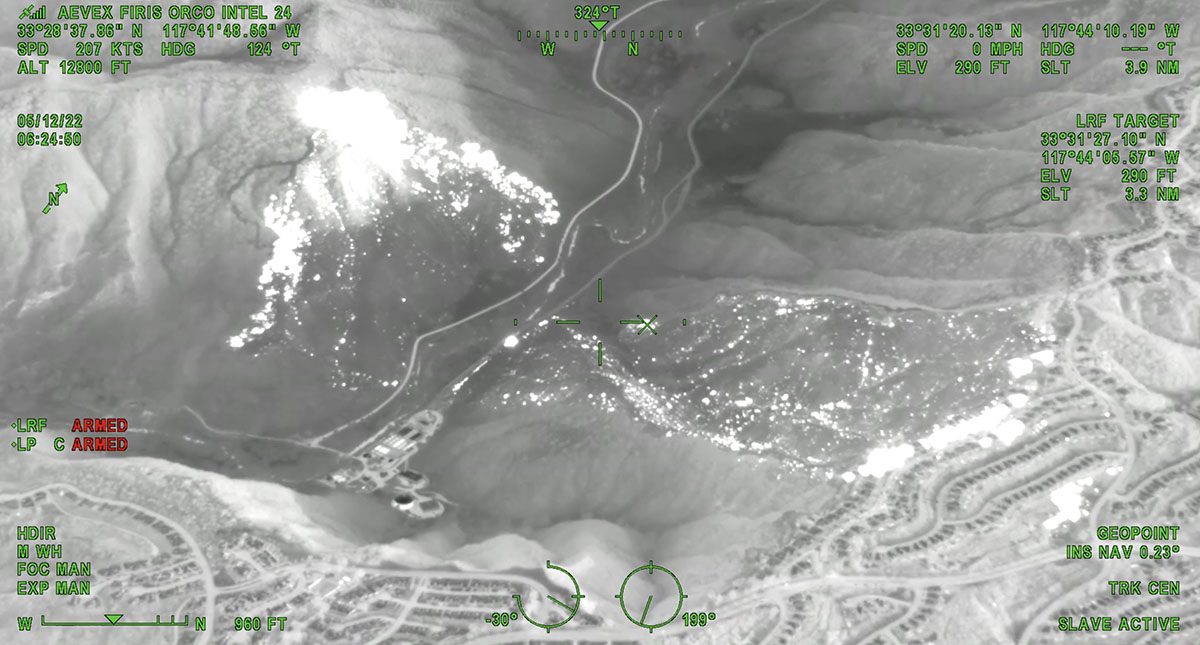
10 News reported that Southern California Edison sent a letter to the Public Utilities Commission regarding “circuit activity occurring close in time to the reported time” of the fire, according to the company’s spokesperson David Song.
“We submitted an initial Electric Safety Incident Report to the California Public Utilities Commission,” Mr. Song said. “SCE is required to submit an ESIR to the CPUC on certain types of incidents. … Our information reflects circuit activity occurring close in time to the reported time of the fire. …The submission of this report to the CPUC is intended to put them on notice of an incident so that it can conduct its own investigation.”
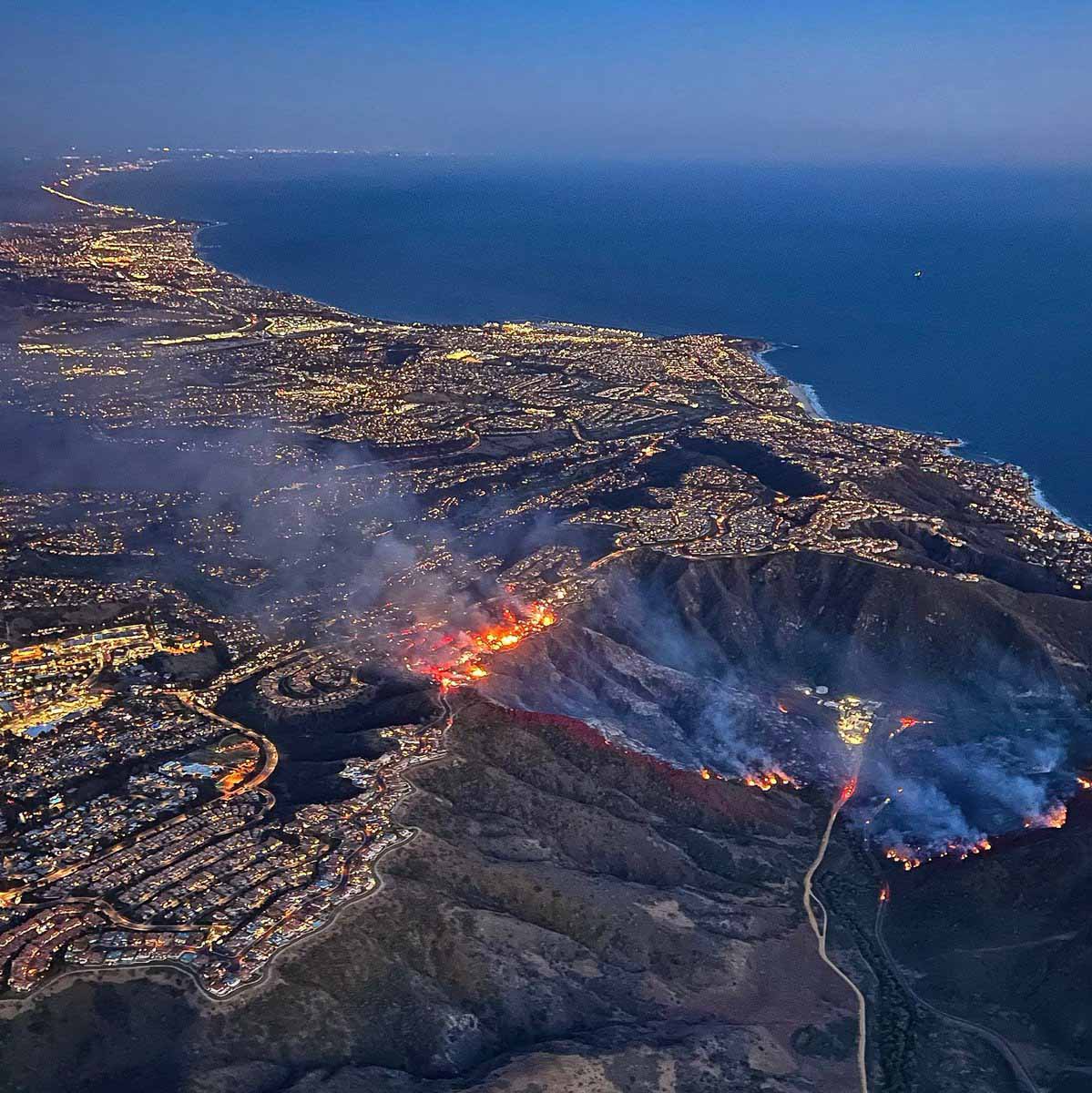
Updated at 4:50 a.m. PDT May 12, 2022
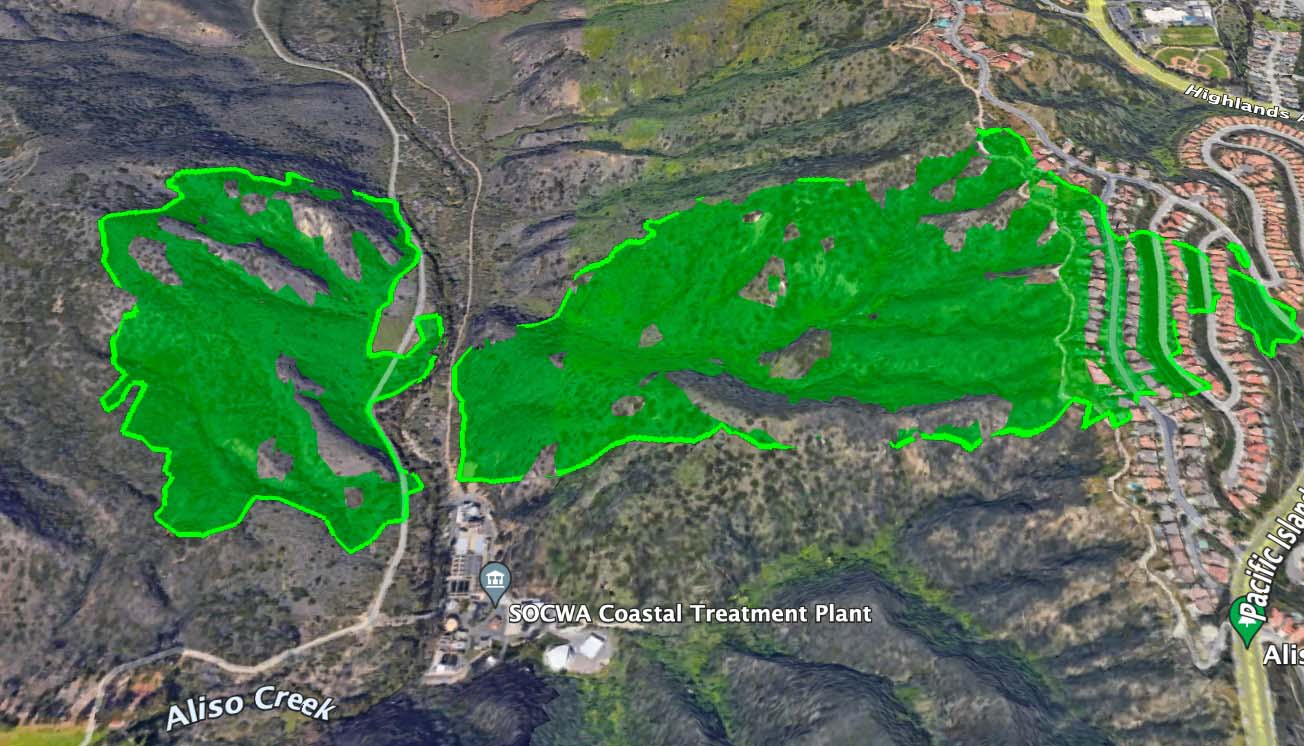
Below is a thermal image of the Coastal Fire at 11:13 p.m. May 11. The white areas represent heat.
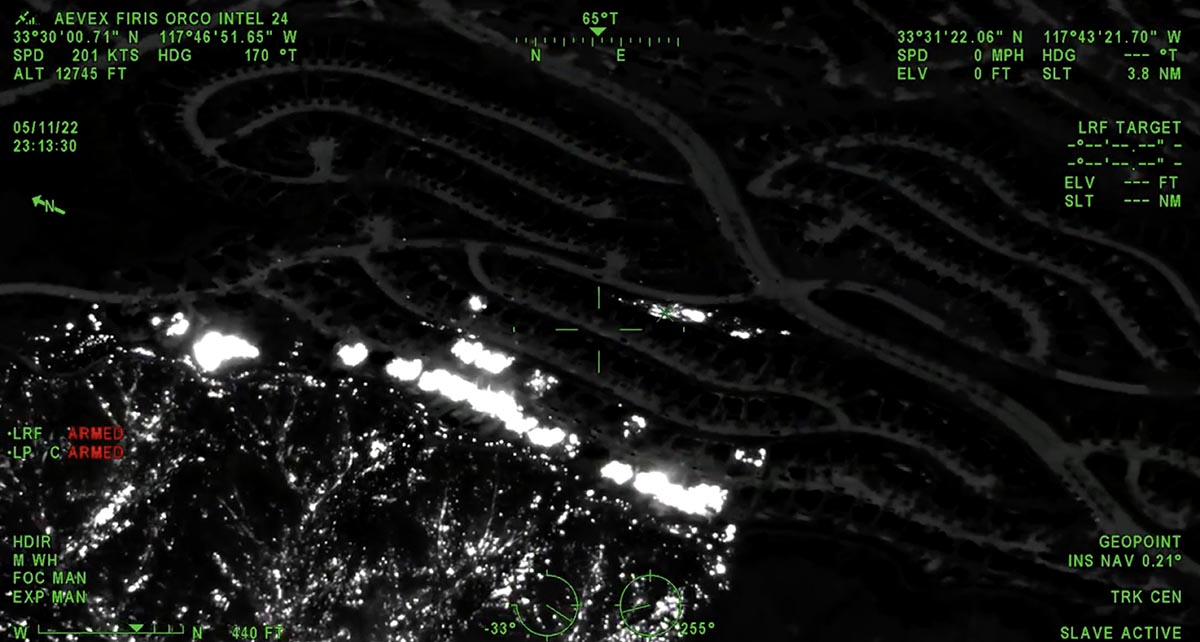
OCFA’s FIRIS Intel 24 on the Costal Incident. Second video of the incident showing the impacted structures along Aliso canyon trail and Coronado point road with the spot fires on top by the club house. Fire is holding at 195 acres. pic.twitter.com/NBMPorYRgD
— FIRIS (@FIRIS) May 12, 2022
8:15 p.m. PDT, May 11, 2022
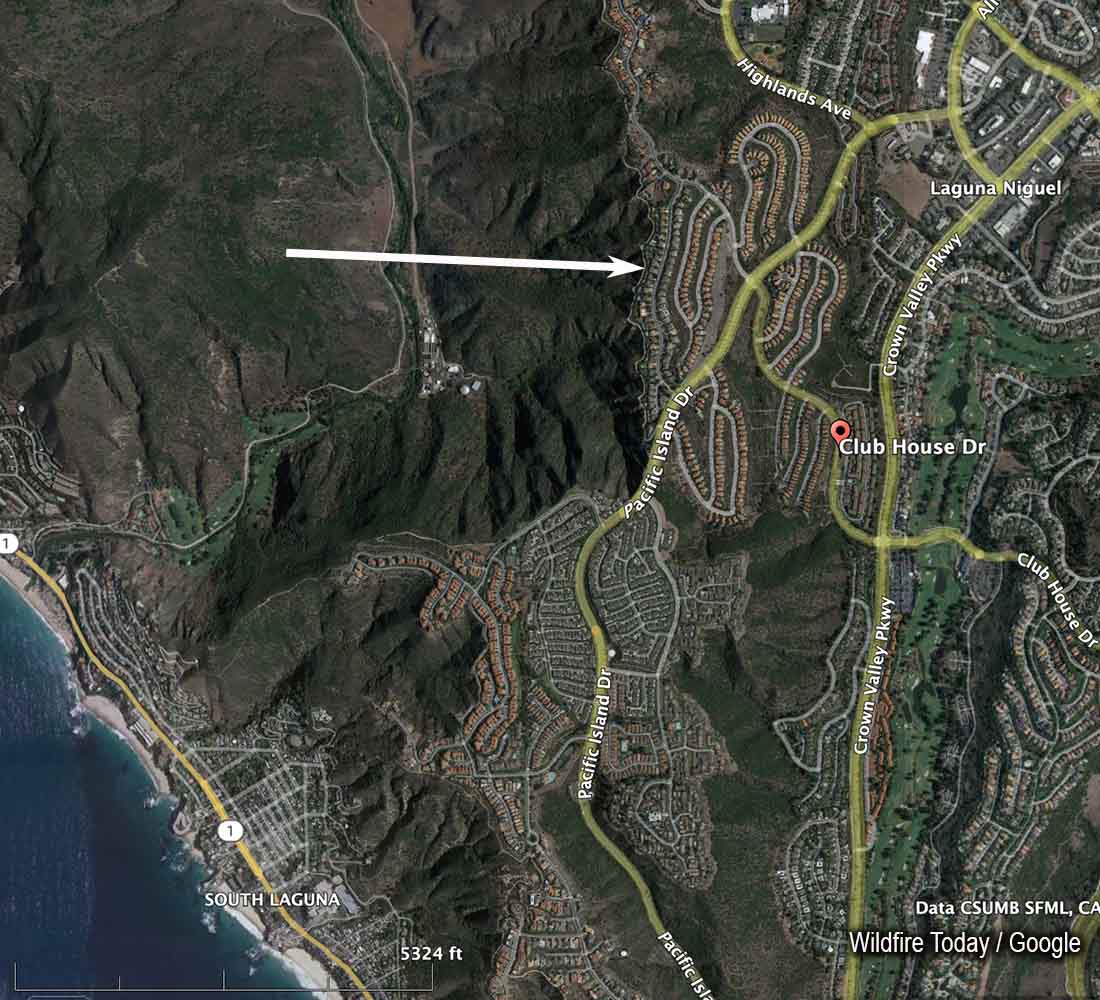
A brush fire in the Laguna Niguel community of Orange County in Southern California spread into homes Wednesday. It was named “Coastal Fire.”
Brian Fennessy, Chief of the Orange County Fire Authority, said at 7:54 p.m. that the fire had burned about 200 acres and he was aware of approximately 20 homes that were destroyed or damaged. The Chief said some of the homes appeared to have been ignited not by direct flame impingement, but from the ember shower, possibly passing through unscreened attic vents.
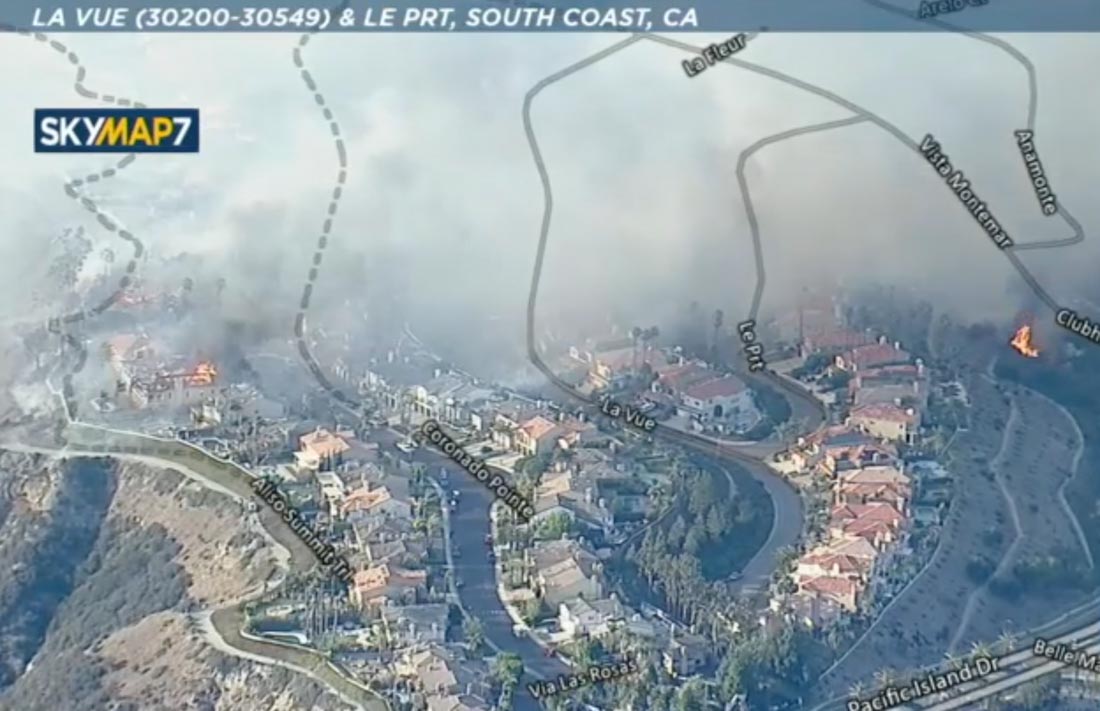
The fire started at about 2:45 p.m. Wednesday approximately a mile east of the coast, west of Aliso Creek, and was pushed by a moderately strong wind out of the west. It burned downhill to the creek, crossed it near a water treatment plant and ran uphill another half mile to rows of large, densely packed homes. By 6:20 p.m. the fire had crossed Pacific Island Drive near Clubhouse Drive.
There was a firebreak below the first structures that were in the path of the fire. It appeared to have prevented flames from the burning brush from directly impacting the homes, but the ember shower and then house to house spread did much of the damage in the community. As homes burned, radiant heat may have ignited the nearby neighboring structures. More embers were generated as each house went up in flames.
Continue reading “Multiple homes burn in Coastal Fire at Laguna Niguel, Southern California”


